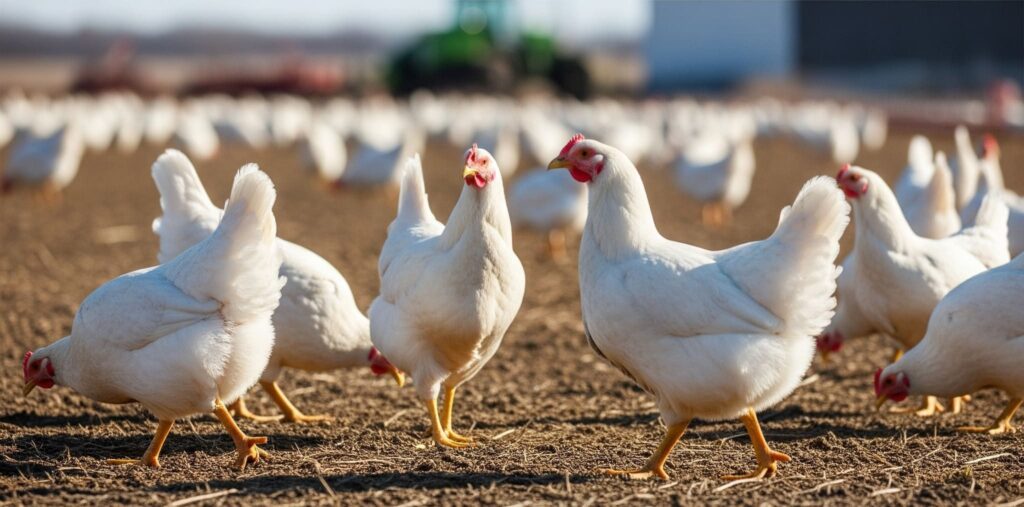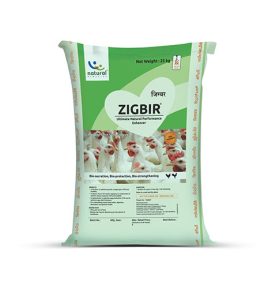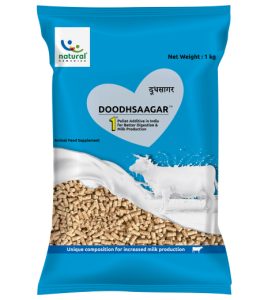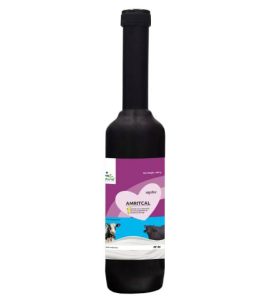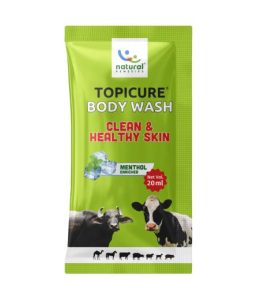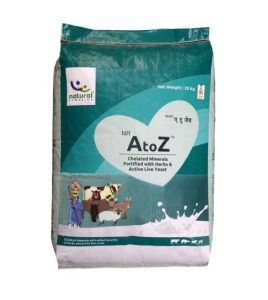Oxidative stress in poultry is a significant concern in modern poultry production systems, particularly affecting broiler chickens. It arises from an imbalance between the generation of reactive oxygen species (ROS) and the bird’s antioxidant defense mechanisms. This imbalance leads to oxidative damage, impacting growth, productivity, gut health, and overall welfare. The multifactorial nature of oxidative stress in poultry is exacerbated by environmental, nutritional, microbial, and genetic factors.
Understanding Oxidative Stress in Poultry
Oxidative stress in poultry is characterized by the accumulation of reactive species—especially ROS—that exceed the neutralizing capacity of the antioxidant system. These reactive species include hydrogen peroxide (H₂O₂), hydroxyl radicals (•OH), and superoxide anions (O₂⁻). Although ROS play roles in signaling and immune responses, their overproduction results in cellular damage to lipids, proteins, and DNA. Mitochondria are the main sites of ROS production during oxidative phosphorylation, and this process is heightened under heat stress and metabolic strain.
There are two key forms of oxidation:
- In-feed oxidation refers to the degradation of lipids, vitamins, and amino acids in feed ingredients during storage.
- In-vivo oxidative stress: Occurs inside the bird due to metabolic strain or external stressors, damaging membranes, DNA, and proteins.
Oxidative Stress in Broiler Chicken
Broilers are particularly vulnerable due to their high metabolic rates and rapid growth. As ambient temperatures exceed 24°C, broilers’ ability to maintain thermal homeostasis diminishes, resulting in increased ROS production. Studies show that oxidative stress in broiler chicken leads to reduced body weight, poor feed conversion ratio (FCR), and muscle degeneration. Heat-stressed broilers exhibit altered metabolism, decreased protein synthesis, and impaired immune function. These physiological alterations underscore the need for effective oxidative stress management in broiler production systems.
Oxidative Stress in Poultry Gut
The gastrointestinal tract (GIT) is highly sensitive to oxidative stress. The poultry gut is continuously exposed to pathogens, feed toxins, and environmental stressors. Oxidative stress in poultry gut leads to epithelial damage, impaired nutrient absorption, and increased intestinal permeability. Such damage not only reduces performance but also compromises immune responses. Chronic intestinal oxidative stress results in dysbiosis, inflammation, and poor nutrient digestibility, directly affecting growth and productivity.
Sources of Oxidative Stress in Poultry
Oxidative stress in poultry can be triggered by various internal and external factors:
- Heat stress is a major contributor, especially in tropical regions. High temperatures lead to increased respiration, metabolic heat, and ROS production, causing lipid peroxidation and cellular damage.
- Microorganisms such as pathogenic bacteria and viruses stimulate ROS production as part of the immune response. However, excessive ROS during immune activation can overwhelm the antioxidant system.
- Mycotoxins like aflatoxins and ochratoxins in feed promote oxidative damage by increasing ROS and suppressing antioxidant enzymes.
- Genetic predisposition plays a role, as fast-growing commercial broilers are more susceptible due to their limited thermotolerance and high metabolic output.
- Feed-Related Triggers of Oxidative Stress
- Lipids: Unsaturated fatty acids in soybean, corn, and sunflower oils are highly prone to autoxidation. Exposure to light, heat, oxygen, and metals (like copper and iron) accelerates rancidity.
- Vitamins & Amino Acids: Vitamin E, vitamin A, methionine, and lysine degrade easily under oxidative conditions, reducing feed’s antioxidant value.
- Pigments: Carotenoids oxidize quickly, affecting pigmentation and antioxidant potential.
- Pro-oxidant agents: Transition metals (Fe, Cu), high temperature, and poor storage conditions increase oxidative damage.
Impact on Performance and Meat Quality
Oxidative stress impairs poultry productivity by reducing feed intake, growth rate, and FCR. It increases energy demands for cellular repair and antioxidant defense, diverting energy from growth. In broilers, oxidative damage is associated with abnormalities such as white striping and wooden breast, which reduce meat quality. Protein oxidation alters texture, tenderness, and water-holding capacity, while lipid oxidation causes rancidity and undesirable flavors. Such quality deterioration leads to consumer rejection and economic losses.
Reproductive and Immune Effects
In laying hens, oxidative stress affects eggshell quality and yolk integrity due to disrupted calcium metabolism and lipid peroxidation. Weakened shells are more prone to microbial contamination and breakage. In roosters, oxidative damage to sperm DNA and membranes compromises fertility. Moreover, oxidative stress disrupts steroid hormone synthesis, affecting reproductive behaviors and hormone balance.
Oxidative stress compromises both innate and adaptive immunity in poultry. High ROS levels impair T cell responses, reduce antibody production, and promote inflammation. Inflammatory cytokines such as IL-1β and TNF-α increase under oxidative conditions, further damaging tissues and reproductive organs.
Oxidative Stress Management
To reduce oxidative stress in poultry, a combination of nutritional, environmental, genetic, and management interventions is essential:
1. Nutritional Strategies
- Vitamins: Vitamins E and C act as potent antioxidants by neutralizing ROS. Supplementation improves heat tolerance, immunity, and growth performance.
- Minerals: Selenium, zinc, and manganese are essential cofactors for antioxidant enzymes like glutathione peroxidase (GPx), catalase (CAT), and superoxide dismutase (SOD).
- Phytogenics: Plant-derived compounds such as quercetin, resveratrol, and curcumin activate cellular protective genes (e.g., Nrf2) that enhance antioxidant responses and reduce NF-κB-mediated inflammation.
- Amino acids: Methionine and arginine improve oxidative balance and gut integrity. Betaine, taurine, and L-theanine exhibit antioxidant and anti-inflammatory effects.
2. Environmental and Management Approaches
- Thermal conditioning and controlled housing with cooling systems mitigate heat load and reduce ROS production.
- Feed restriction during hot periods lowers metabolic heat production, and wet feeding increases water intake, promoting thermoregulation.
- Stocking density: Lower densities reduce metabolic stress, ammonia buildup, and oxidative biomarkers like malondialdehyde (MDA).
3. Genetic Selection
Breeds with adaptive traits, such as the naked neck and frizzle genes, show improved thermotolerance and lower oxidative stress levels. Marker-assisted breeding using heat shock proteins (HSP70, HSP90) enhances resilience under stress conditions.
Cellular Signaling and Antioxidant Defense
Nrf2 (Nuclear factor erythroid 2–related factor 2) is a key transcription factor regulating antioxidant defenses. Under oxidative stress, Nrf2 activates vitagenes and detoxifying enzymes such as GPx, CAT, and SOD. Phytochemicals enhance Nrf2 expression, offering a strategic pathway for oxidative stress mitigation.
NF-κB, another transcription factor, promotes inflammatory responses during oxidative stress. Nutritional antioxidants downregulate NF-κB and upregulate Nrf2, providing a dual benefit by reducing inflammation and enhancing redox balance. This interplay is crucial for oxidative stress management in poultry.
In conclusion, addressing poultry oxidative stress is vital for maintaining bird health, performance, and product quality. Among various strategies, phytogenic solutions like Phytocee® have emerged as promising natural antioxidants. Phytocee combats oxidative stress in poultry by promoting resilience, cell mediated immunity, and relieving stress. Phytocee offers a holistic and sustainable approach to oxidative stress management in poultry production.















